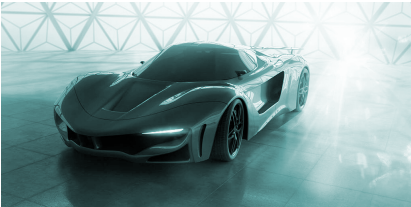GCSE Questions: Forces
Q30. The photo shows an electric super-car.

(a) The battery in an electric car needs to be recharged.
Suggest two factors that affect the distance an electric car can travel before the battery needs to be recharged.
Any two from: 

capacity of the battery
speed travelling at
mass / weight
uphill / downhill route
stopping at traffic lights
condition of the road
(air) temperature
(incorrect) tyre pressure
streamlining of the car
[2 marks]
(b)
(i) Write down the equation which links acceleration (a), change in velocity (Δv) and time taken (t).
a = Δv/t 
[1 mark]
(ii) The maximum acceleration of the car is 20 m/s2 .
Calculate the time taken for the speed of the car to change from 0 m/s to 28 m/s at its maximum acceleration.
t = Δv/a
t = 28/20 
t = 1.4  s
s 
[3 marks]
(c) In a trial run, the car accelerates at 10 m/s2 until it reaches its final velocity.
Given that the distance travelled by the car = 605 m and the initial velocity of the car = 0 m/s, calculate the final velocity of the car.
a = 10 m/s2
s = 605 m
u = 0
v = ?
v2 = u2 + 2as
v2 = 0 + 2 x 10 x 605 
v2 = 12100 
v = 110 m/s 
[3 marks]
(d)
(i) Write down the equation which links distance (s), force (F) and work done (W).
W = Fs 
[1 mark]
(ii) When travelling at its maximum speed the air resistance acting on the car is 4000 N.
Calculate the work done against air resistance when the car travels a distance of 7.5 km at its maximum speed.
s = 7.5 km = 7500 m 
W = 4000 x 7500 
W = 30 000 000 = 3.0 x 107 J 
[3 marks]
[13 Marks TOTAL]







